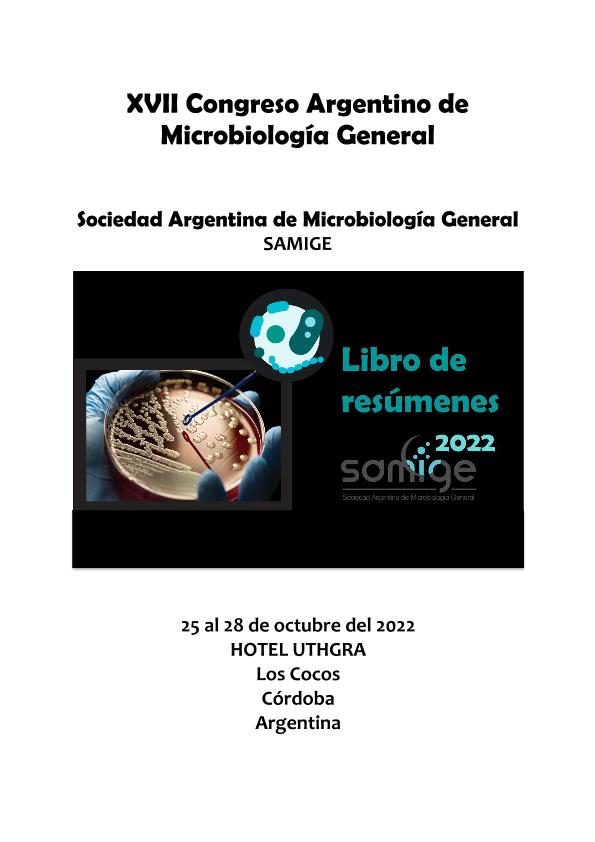Evento
Use of Aspergillus biomass obtained from sugarcane vinasse as a cheap feed ingredient for raniculture
Pérez Iglesias, Juan Manuel ; del Gobbo, Luciana Melisa
; del Gobbo, Luciana Melisa ; Jorquera, Agustina; Cortez, Agostina; Colin, Veronica Leticia
; Jorquera, Agustina; Cortez, Agostina; Colin, Veronica Leticia
 ; del Gobbo, Luciana Melisa
; del Gobbo, Luciana Melisa ; Jorquera, Agustina; Cortez, Agostina; Colin, Veronica Leticia
; Jorquera, Agustina; Cortez, Agostina; Colin, Veronica Leticia
Tipo del evento:
Congreso
Nombre del evento:
XVIII Congreso Argentino de Microbiología General
Fecha del evento:
25/10/2022
Institución Organizadora:
Sociedad Argentina de Microbiología General;
Título del Libro:
Libro de Resúmenes del XVII Congreso Argentino de Microbiología General
Editorial:
Sociedad Argentina de Microbiología General
Idioma:
Inglés
Clasificación temática:
Resumen
Aquaculture of vertebrates faces several challenges, including the unavailability of good quality and affordable fish feeds. Therefore, this practice seeks a shift towards less expensive protein sources, such as the biomass of some species of fungi, instead of conventional sources such as fishmeal and soybeans. Vinasse is relevant worldwide due to its polluting potential; therefore, improving the management of this distillery effluent is of great importance. Hence, recycling of vinasse for the manufacture of value-added fungal biomass could reduce production costs of aquatic vertebrate’s culture feed and environmental impact of distillery effluents. Previously, our working group demonstrated that biomass of fungus Aspergillus sp. V1 produced from sugarcane vinasse present a nutritional composition within the standards recommended for use in aquafeed formulations. The goal of this study was to evaluate the use of fungus biomass as a cheap feed ingredient for aquatic vertebrate farming. For that, the creole frog tadpoles (Leptodactylus luctator) was used as a local model for raniculture. The Aspergillus biomass cultivated on sugarcane vinasse for 96 h was harvested, was lyophilized and macerated to a powder. For feed test, a chronic study (10 days) with different administrations of the lyophilized fungus (0%, 50% and 100%) compared to a commercial food (Shulet Carassius) was carried out. As variables, parameters related to tadpoles’ growth (body condition index, K) and enzymes related to oxidative stress (catalase and TBARS) were evaluated. Under the current assay conditions, feed test revealed a high survival (100%) in the fish fed with the lyophilized fungus compared to fishes feeding with commercial food (60%). Also, the statistical analyzes showed similarity between all the treatments in K index and catalase. However, the statistical analyzes revealed significant increases in the lipidic oxidation (TBARS) related to physiological stress in tadpoles where commercial food was administered (value: 38.694) compared to those fed with lyophilized fungus (value: 7.028). This study demonstrated that biomass of Aspergillus sp. V1 cultivated in vinasse is a suitable alternative an inexpensive raniculture feed ingredient.
Archivos asociados
Licencia
Identificadores
Colecciones
Eventos(PROIMI)
Eventos de PLANTA PILOTO DE PROC.IND.MICROBIOLOGICOS (I)
Eventos de PLANTA PILOTO DE PROC.IND.MICROBIOLOGICOS (I)
Citación
Use of Aspergillus biomass obtained from sugarcane vinasse as a cheap feed ingredient for raniculture; XVIII Congreso Argentino de Microbiología General; Los Cocos; Argentina; 2022; 150-151
Compartir



